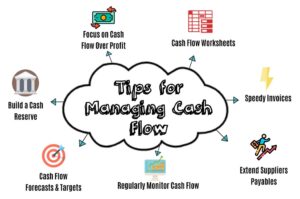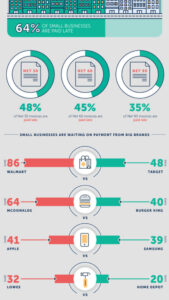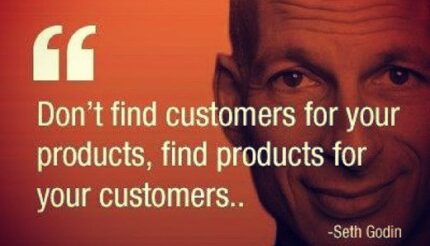The Meaning Of Cash Flow
It’s a word that’s thrown around a lot in business. But what is the meaning of cash flow?
Picture this.
You’re running a successful business, but you’re struggling to keep up with the bills.
You’re terrified of payroll.
And all the other expenses that keep showing up.
You’re bringing in revenue, but somehow you’re always short on cash.
And you’re getting frustrated with the staff because they are not pulling their weight. Do they not understand how bad things have gotten?
What’s going on?
The answer may surprise you.
But you’ll get clarity and know exactly what to do next as we explore the mysterious world of cash flow.
As we move forward, we’ll uncover some of the hidden factors that could be impacting your bottom line.
So get ready for a deep dive into the financial heart of your business.
As we uncover the meaning of cash flow.

The Meaning Of Cash Flow
What does Cash Flow mean?
As a small business owner, your main goal is to make a profit.
And most small business owners know that cash is king.
But do you understand what cash flow means for your business?
Cash flow is the movement of money in and out of your business.
It’s the amount of money you have coming in.
Which could be from sales, investments, loans, and other sources.
Minus the amount of money, you’re spending on expenses.
Things like salaries, rent, and stock.
But what happens when you make a profit on paper but can’t pay the bills?
This is where the importance and the meaning of cash flow come in.
Cash flow is the amount of money that comes in and goes out of your organisation. It’s the lifeblood of your business.
Without positive cash flow, your business can go under.
No matter how profitable it may seem on paper.
That’s why understanding the importance of cash flow is critical.

Cash is king
The Meaning Of Cash Flow
Cash flow can be a confusing concept, but it’s essential to know what it means and how it affects your business. In simple terms, cash flow is the movement of cash in and out of your business.
Positive cash flow means that your business is making more cash than it’s spending.
While negative cash flow means that your business is spending more cash than it’s making.
Understanding your cash flow is essential to manage your business finances.
It’s also important so that you can make informed decisions, and plan for the future.
In this article, we’ll cover everything you need to know about cash flow for small business owners.
We’ll discuss the meaning of cash flow.
The difference between cash flow and profit, and why cash flow is better than profit.
We’ll also go over why cash flow is so important, how to calculate it, and the top three tips to help you with cash.
By the end of this article, you’ll have a better understanding of cash flow and how to keep it positive.
It’s about time you made some money out of this business.
Turning theoretical “Profit” into cold hard CASH
Profit may seem like the ultimate goal of any business, but it doesn’t always translate to cash in the bank.
Profit is the difference between your revenue and expenses over a specific period. But it doesn’t take into account the timing of cash in and cash out.
Once you invoice someone, it counts on the “Profit And Loss Statement”.
But if you don’t get paid for it in time, you might be due tax on that income before you’ve had the cash.
Think about it.
Do you get paid on every single invoice on the same day that you send it?
There’s often a delay, right?
That’s negative cash flow.
That means that even if you’re making a profit on paper, you may not have the cash on hand to pay your bills.
Spend on assets.
Or invest in your business.
For example, let’s say you own a retail store that sells seasonal products.
During the holiday season, you make a significant profit on paper. And let’s say most of your customers pay on credit.
For some reason, you decided to offer credit during the most recent recession. But that’s created some trouble. Because it means you won’t receive the cash for those sales until weeks or even months later.
Meanwhile, you need to pay for the stock, rent, and other expenses that are due immediately.
That kind of example can lead to negative cash flow, even though you’re making a profit.
To turn profit into cash, you need to focus on managing your cash flow.
This means looking at the timing of cash inflows and outflows and planning.
One way to do this is to shorten the payment terms for your customers. Some companies now need deposits for custom orders for example.
You can also negotiate better payment terms with your suppliers.
That way you’ll give yourself more time to pay your bills.
Another way to turn profit into cash is to manage your stock levels. Too much inventory can tie up your cash, while too little can lead to lost sales.
Think about how much that could change your bank balance…
… If you:
– Get your invoices out, and get paid on them MUCH QUICKER.
– Reduce how much stock you have so that your cash isn’t tied up in stock.
– Negotiate with your suppliers so that you have longer to pay them.
All 3 of those things would have a major impact on your cashflow.
You’re getting paid quicker, paying out slower, and you don’t have cash tied up.
NOTE: If you don’t have any stock, there’s a good chance you own a service business. If you do own a service business, replace “stock” with “work in progress”. It means “work you haven’t finished yet, and can’t invoice for until it’s done”. That’s where cash gets tied up for a service business.
So forecast your sales and be as accurate as possible. Then manage your stock (or work in progress) levels. That way you can ensure that you have enough stock to meet demand without tying up too much cash.
Turning profit into cash requires an understanding of your cash flow.
It helps you become more effective when managing your business finances.
By focusing on managing the timing of cash and optimising your stock levels (or diaries if you’re a service business), you can turn theoretical profit into cold hard cash.
Why cash flow is better than profit…
You may have heard the phrase “cash is king,” and there is a good reason for that.
While profit is important for any business, cash flow is what keeps the lights on and the doors open. Cash flow is the lifeblood of your business and allows you to pay bills, make investments, and grow.
There are many advantages to having a healthy cash flow over profit. For one, cash flow allows you to have more control over your business.
With cash on hand, you can make strategic investments.
Try new ideas.
And take advantage of opportunities as they arise.
Without cash flow, you may need to rely on outside funding, which can be costly and time-consuming.
It’s also worth noting, outside funding can only help for so long.
If you run at a loss or fail to recover cash that’s owed, for years on end…
Banks will stop lending you money.
Additionally, cash flow is more predictable than profit.
One-time events such as the sale of an asset affect profit. But they are often things that may not be repeatable.
When you create a cash flow forecast you will often build it by looking at previous revenue.
It allows you to plan for the future and make strategic decisions about your business.
It means that your forecast becomes predictable.
Finally, cash flow is what allows businesses to weather tough times.
During a downturn, businesses with healthy cash flow can pay their bills. Or take opportunities.
While weak cash flow may force companies to close their doors.
Having cash on hand can do the opposite.
It can provide a safety net and help you invest in growth.
Profit is important, but cash flow is what allows businesses to thrive and grow.
Having a healthy cash flow provides stability, predictability, and flexibility.
Why is cash flow so important?
Cash flow is one of the most crucial aspects of any business, yet it is often overlooked.
Or underestimated.
The meaning of cash flow is simple. It’s the movement of money in and out of a business.
It is the lifeblood that keeps a business running.
But why is cash flow so important?
Poor cash flow management can lead to serious consequences, including business failure.
When a business doesn’t have enough cash on hand to pay its bills, suppliers, or employees, it can spiral out of control.
You’ll often find that a business gets itself into more and more debt when it can’t make supplier or tax payments.
Without cash, a business can’t invest in growth opportunities.
Nor can it pay for essential expenses, or survive in the long term.
But, good cash flow management changes everything.
It allows the business to make timely payments, avoid late fees or penalties, and grow.
Cash flow also provides a cushion in case of unexpected emergencies. Which reduces the risk of business failure.
Real-life examples of businesses that failed because of poor cash flow are too common.
Take Blockbuster, for instance.
The once-dominant video rental company failed to adapt.
The market was changing and the rise of streaming services led to a decline in revenue and cash flow. It forced the company to file for bankruptcy.
Another example is Toys “R” Us. The toy retailer struggled with poor cash flow for years. They accumulated debt and struggled to keep up with online competitors.
Despite attempts to restructure and adapt, the company was unable to overcome its financial struggles.
They filed for bankruptcy in 2017.
These examples highlight the importance of cash flow management for businesses of all sizes.
You should prioritise cash flow and put in place sound management strategies.
Then your business can avoid the risks of poor cash flow and thrive in the long term.

How do you calculate cash flow?
Calculating cash flow is an essential aspect of managing a business’s financial health.
To calculate cash flow, you need to take into account all the money coming into the business.
Then look at all the money leaving the business in the form of expenses, investments, and loan repayments.
The formula for calculating cash flow is:
Cash flow = Total cash in – Total cash out
The total cash in comes from sales, investments, loans, and any other sources of cash.
The total cash out are things such as rent, salaries, equipment purchases, loan repayments, and other expenses.
To calculate cash flow for different types of businesses, you need to adjust the formula.
You should base it on the specific types of cash inflow and outflow.
For example, a retail business may have more cash inflow from sales or revenue.
While a manufacturing business may have more cash outflow from equipment purchases and raw materials.
It is important to track cash flow over time.
Then you can make sure that the business has enough cash to pay bills and invest in growth opportunities.
A positive cash flow indicates that the business has more cash coming in than going out. While a negative cash flow indicates that the business is spending more than it is earning.
By monitoring cash flow, business owners can identify potential problems early.
Then they can take corrective actions to avoid cash flow crises.

3 Cash Flow Tips
What are the top 3 tips to help me with my cash flow?
There are several tips and strategies you can use to improve your cash flow.
It can make a big difference when trying to keep your business afloat.
So here they are.
The top three tips to help you manage your cash flow:
1. Keep your expenses under control
One of the most effective ways to manage your cash flow is to keep your expenses in check. Take a hard look at your expenses and see if there are any areas where you can cut back. It might mean renegotiating contracts. Or dropping luxuries that aren’t making you any money. You could find more cost-effective suppliers, or reduce your overhead costs.
2. Create a cash flow forecast
A cash flow forecast is a prediction of the inflows and outflows of cash for your business. By creating a cash flow forecast, you can understand your business’s cash flow needs. You should review your forecast once the month is complete. Check how you performed vs the forecast. If you’re miles out, it will show you where you need to improve when it comes to forecasting. A forecast can help you make more informed decisions about how to manage your finances.
3. Stay on top of your invoicing
Late payments from customers can be a major drain on your cash flow. To avoid this, make sure you have a clear invoicing process in place. You should have set payment terms and a system for following up on overdue payments. Consider using online invoicing software that can automate the invoicing process. It will send reminders to customers when payments are due.
Remember, cash flow is not about having money in the bank. It’s about understanding the flow of cash in and out of your business. It’s also about making informed decisions about how to manage your finances. With these tips in mind, you can take control of your cash flow and build a more successful business.
Summary – The Meaning Of Cash Flow
I often get asked, “how can a business coach help me with all things finance?”
Let me paint a picture…
Imagine waking up tomorrow to find your bank account suddenly empty.
Every penny you thought you had, every pound you were counting on, vanished into thin air.
How would you survive?
Or pay your bills?
And how would you put food on the table?
The answer lies in understanding the power of cash flow.
If you put into practice the things we talked about in this article…
Everything will change.
Cash will come flowing in.
You’ll have less stress.More money.And better sleep.
We explored the ins and outs of cash flow and how it can make or break your financial well-being.
We discovered the secrets of managing your money like a pro.
And securing your financial future.
Now all you need to do is take the action.
Get ready to chase your outstanding invoices.
Complete your work so you can invoice quicker.
Keep your stock levels low so you don’t have cash tied up.
And negotiate with your suppliers so you can pay them a little later.
Now it’s time to grab a cup of coffee, get your pen and pad out, and dive into the exciting world of cash flow.
PS If you have any tips or hints that have helped you with cashflow, type them in the comments.






